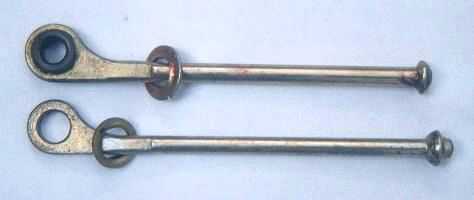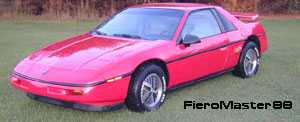We all know Fiero clutch hydraulics are a pain, right? They're mysterious and messy, and too often they don't work. I've been dorking-around with mine for a few weeks.
After sudden failure, I replaced clutch master and slave cylinders. I bled the hydraulics as many ways as I could think of (fast, slow, alone, with a helper, with a catch tank, with a MityVac, with the slave cylinder dangling, with the car's rear elevated, with the front elevated). I compared the bore sizes of old and new cylinders. I used the guts from my new cast slave cylinder to rebuild my old OEM slave cylinder. I threw wrenches and cursed. I flushed about 5 cans of brake fluid through the system. (I think all the air is out.) Pedal effort felt good; however, slave cylinder travel was too short, and the clutch did not fully disengage. All very annoying. Iíve repaired clutch hydraulics on lots of cars; it ainít rocket science. Why is this one so perverse?
And then I found the reason . . .

This photo shows pushrods from two superficially identical Girling first-design clutch master cylinders. The lower rod is from my old master cylinder; the upper rod is from my new replacement cylinder. (I transplanted the bushing from old to new rod.)
Although the pushrod lengths appear very different, their effective lengths are almost the same beccause of internal differences in the master cylinders. HOWEVER, the new shorter pushrod does not allow the clutch pedal to return fully to its stop. Because the clutch pedal begins its travel at a lower point, the effective stroke of the new master cylinder is about 1/4Ē shorter than the old one. Of course, a shorter stroke displaces less fluid to the slave cylinder.
I gotta say -- after a few weeks of frustrated uncertainty, it's good to find a visible problem. Hereís my solution, the good old adjustable pushrod:

It works! Lots of other people (e.g. skitime) have posted variations on this problem and solution. This really is something you should check if youríre having problems with your clutch after replacing the master cylinder, particularly an aftermarket cylinder. Maybe this is why GM master cylinders work better Ė not a hydraulic but a mechanical problem.





















